The data comes as rising housing prices in cities and suburbs push Americans deeper into fire-prone areas.
By Christopher Flavelle | The New York Times
| Updated: 2:11 p.m.
DAMMERON VALLEY, Utah • The nation’s wildfire risk is widespread, severe and accelerating quickly, according to new data that, for the first time, calculates the risk facing every property in the contiguous United States.
The data, released Monday by the First Street Foundation, a nonprofit research group in New York, comes as rising housing prices in cities and suburbs push Americans deeper into fire-prone areas, with little idea about the specific risk in their new locale.
That’s because the federal government maps flood risk at the property level but doesn’t do the same for wildfires, which are growing more frequent and severe because of climate change.
“For too long, we have let people live in communities, and even attracted them to join a community, while keeping them in a state of ignorance about the risk that they’re under,” said Roy Wright, a former head of risk mitigation at the Federal Emergency Management Agency.
Wright said he hoped the new data would “draw attention to the risk and drive people to take action.”
The data is being released at the outset of what promises to be a wildfire season even worse than usual, with blazes already burning in more than a dozen states.
Half of all addresses in the Lower 48 face some degree of wildfire risk, according to First Street’s model, a number that will rise to 56% by 2052. In some rural states, including Wyoming and Montana, more than 90% of properties already face some risk.
(The New York Times) The nation’s wildfire risk is widespread, severe and accelerating quickly, according to new data that, for the first time, calculates the risk facing every property in the contiguous United States.
Of all the addresses nationwide that could be damaged by wildfire, more than 686,000 face at least a 1% chance this year — the same degree of risk that the government uses to determine which houses are sufficiently in danger of flooding that they need flood insurance. But wildfire risk is more dangerous, according to First Street, because, while flooding often damages only parts of a house, fire is more likely to destroy it entirely.
A 1% risk may seem small. But that possibility compounds over time, becoming a 26% risk over 30 years — the span of a typical mortgage. Over the course of that 30-year mortgage, more than 381,000 properties nationwide face a risk of wildfire that is greater than 50%, according to First Street.
First Street’s analysis of property-level exposure to risk is underpinned by a high-resolution model of wildfire behavior across the country. The model is based on a number of factors, including the proximity to combustible fuels that contribute to wildfire — such as shrubs, grasses and trees — historical weather, previous fires, and warming climate conditions such as temperature and precipitation. It builds on estimates from the U.S. Forest Service of community-level wildfire risk.
Researchers at the Forest Service and elsewhere said First Street’s approach was reasonable, although they cautioned that such granular projections should be viewed as estimates only, with significant levels of uncertainty.
Greg Dillon, director of the Forest Service’s Fire Modeling Institute, said people also shouldn’t discount the threat of wildfire just because they’re not in the highest risk categories on such maps. “If you’re in anything but the lowest risk category, you should be talking to your neighbors about risk mitigation and what you can do,” he said. “In a lot of the United States, there’s a potential for fire.”
Perhaps surprisingly, the state with the most properties facing at least a 1% wildfire risk is Florida, with almost 200,000 such parcels. (The next highest are Texas and California, with about 100,000 properties each.) Florida has thick vegetation that can burn easily, including palmetto and pine trees, when dried out by increasingly hot temperatures tied to climate change, according to Michele Steinberg, wildfire division director at the National Fire Protection Association.
In 30 years, First Street’s model predicts that California will take the lead, with 631,755 addresses facing at least a 1% annual risk from wildfire, followed by Texas (474,367 properties) and Florida (383,634). Arizona, Utah, Nevada and New Mexico will each have more than 100,000 properties with that much risk.
Nationwide, the number of existing properties facing at least a 1% risk will almost quadruple, to 2.5 million. And that doesn’t account for subdivisions to be built in the intervening years.
Matthew Eby, executive director of First Street, said he was most surprised by how much the wildfire risk is projected to increase over the next 30 years. He called that escalation “just mind-boggling.”
The level of risk in those states partly reflects their size. When measured as a share of all properties, fire risk is greatest in Utah. More than 5% of properties there have at least a 1% chance of experiencing a wildfire, far more than in any other state. (Only Nevada comes close, followed by New Mexico.) Utah is also one of the fastest-growing states in the country, putting more homes at a risk that, until now, has not been measured.
Perhaps nowhere is the collision between unmapped wildfire risk and America’s feverish housing market clearer than in Dammeron Valley, a small town in southwest Utah.
(Bridget Bennett | The New York Times) A house under construction in Dammeron Valley, a small town in Utah that exemplifies the collision between unmapped wildfire risk and America's feverish housing market, May 9, 2022.
A cattle ranch until 40 years ago, the town is almost absurdly pretty, cupped by gentle hills and carpeted by sagebrush and juniper. The only commercial property is a small vineyard that grows malbec and pinot noir. On the valley floor, many properties have horses. Curving roads lead into the foothills, where newer olive-colored houses with picture windows peek out from clusters of pinyon pines. A constant breeze helps keep the town a few degrees cooler than St. George, Washington County’s main city, 15 miles south and 2,000 feet lower.
But as the climate warms, the rolling hills and foliage that make Dammeron Valley so attractive are increasingly making it dangerous.
When Lonnie Andrews moved from Southern California two years ago, everything seemed to be going right. His money went further, he made new friends and the value of his house kept rising as Americans increasingly flocked to this corner of southwest Utah, the fastest-growing area in the United States.
Then, the hillside in front of Andrews’ new house burst into flames.
Firefighters kept the blaze from consuming his side of town. But soon after, another wildfire approached from a different direction, only to narrowly miss Dammeron Valley again.
“We hadn’t been here but a couple of months,” said Andrews, a former bull rider, who said no one warned him about wildfires when he bought his house.
All of Dammeron Valley’s roughly 500 properties face at least a 1% annual wildfire risk, data show. For almost 200 of them, the risk is 5% or greater. By 2052, every property in town is projected to reach that 5% threshold.
Yet even as the risk grows, so does the population. The St. George metro area, which includes Dammeron Valley and the rest of Washington County, increased by 5% between 2020 and 2021, adding about 10,000 new residents, a rate greater than any other metro area in the country, the Census Bureau announced in March.
As St. George grows, more people are moving to outlying towns such as Dammeron Valley. One evening last week, Randy Ruesch was walking his two cocker spaniels with his daughter Haily in front of the home he is building at the edge of town.
Ruesch, who lives in St. George, said he had decided to move to Dammeron Valley for more space. “It’s getting too congested,” he said. Gesturing toward his new house, Ruesch noted with satisfaction that no matter where one stood, it was impossible to get an unimpeded view of the structure — there were too many trees around it.
The threat of wildfires had given him no pause about building a home here, Ruesch said, calling it the price of the peace he finds in living at the edge of the woods. “It’s kind of like the reward for the risk,” he said.
Up the hill, Layne Hanna gave a visitor a tour of his recently completed 2,500-square-foot house with white walls, polished concrete floors and 12-foot ceilings. Glass doors open onto a pool deck on the west side of the building, where swimmers can watch the sun set over Nevada.
Hanna and his wife are moving to Dammeron Valley from Boise, Idaho. They wanted to retire somewhere with milder winters. He said he knows the pinyon pines and junipers around his property are a fire risk. But if he cut them down, he would be able to see his neighbor’s house, and vice versa, something he claimed neither he nor the neighbor much wanted.
“It’s a gamble,” Hanna said of living in the house. “But I try to look at the positive.”
Local officials no longer want to gamble. Two years ago, the town hired a professional fire chief. To fund the position and upgrade services, officials had to double the annual fee that residents pay for the fire department, to $480.
The reaction was not positive. “You would have thought we were taking babies away from their moms,” said Mack Sorenson, chair of the county-appointed board that oversees the fire department.
Then, in September 2020, a wildfire started on the far side of the extinct Veyo Volcano, a 5,000-foot cinder cone shaped like a saddle and forming Dammeron Valley’s western boundary. The fire crested the top of the volcano, then swept down the near slope, feeding on sagebrush and leaving behind charred husks of trees.
The newly professionalized Dammeron Valley Fire Department set up a line between the hill and the town and stopped the fire from reaching homes. Complaints about the fire fee stopped, Sorenson said.
Construction is unlikely to slow down. Last week, Sorenson drove past the spot where the 2020 fire was stopped. Just below the fire line, a developer has plans to build more homes. Sorenson said he expected those plans to go ahead. He pointed to the land that almost burned.
“This,” Sorenson said, “is all going to be new houses.”
This article originally appeared in The New York Times.

 435.215.7170
435.215.7170




 Service Areas
Service Areas























